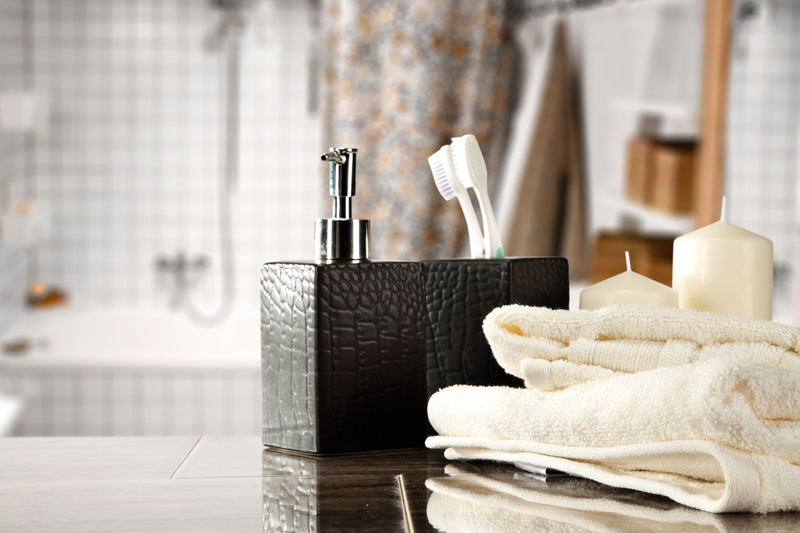Mastering the Art of Piano Moving: A Job for Specialists
Posted on 15/06/2025
Mastering the Art of Piano Moving: A Job for Specialists
Pianos are much more than musical instruments; they are treasured heirlooms, investments, and often the centerpiece of a home. However, the process of moving such a delicate and valuable piece is far from simple. Mastering the art of piano moving requires a unique set of skills, specialized equipment, and an in-depth understanding of both the instrument and the logistics of transportation. In this comprehensive guide, we'll delve into why piano relocation is a job best left to specialists, explore the intricate techniques professionals use, and offer crucial tips for anyone considering a piano move.

Why Is Piano Moving Different from Other Types of Moving?
Unlike most furniture or appliances, pianos come with a rare combination of challenges:
- Weight: Even small upright pianos can weigh 300-500 pounds, while grand pianos can exceed 1,000 pounds.
- Delicate Mechanisms: Each piano contains thousands of moving parts, many of which are sensitive to jarring or tilting.
- Shape and Size: The bulkiness and unique shape of pianos make them awkward to maneuver through doorways, staircases, and tight spaces.
The Hidden Dangers of DIY Piano Moving
Attempting a DIY piano move can be perilous. Aside from the risk of injury to yourself or others, there's the high probability of significant damage to the piano. Even a single mistake can result in:
- Internal Mechanism Damage: Subtle bumps can throw off a piano's regulation, break strings, or crack soundboards.
- Cosmetic Harm: Scratches, dents, and chips to the piano's elegant finish can be almost impossible (and very expensive) to repair.
- Property Damage: Improperly maneuvered pianos can scar floors, gouge walls, or smash stair railings and door frames.
Why Trusting Piano Specialists Is Essential
Piano moving specialists aren't just movers with a robust build--they are trained technicians who understand the complexities of handling these exquisite instruments. Here's what sets them apart:
- Expert Assessment: Professionals evaluate the piano's size, weight, construction, and the specifics of its location before forming a tailored moving plan.
- Proper Equipment: Heavy-duty dollies, lift straps, protective blankets, and custom skid boards are employed for maximum safety.
- Insurance Coverage: Reputable piano moving companies carry comprehensive insurance to protect your instrument and property.
- Experience: Trained specialists can anticipate and overcome obstacles such as spiral staircases, tight elevators, and narrow doorways.
The Anatomy of a Professional Piano Move
A professional piano move is a symphony of careful planning and practiced technique. The process usually unfolds in these steps:
- Preparation: Technicians start by assessing the move and identifying exit routes. They gather the appropriate supplies, including padding, straps, and protective covers.
- Disassembly (if required): For grand pianos, movers may remove the legs, pedals, and music stands. Each part is carefully wrapped and labeled.
- Protection: Every surface of the piano is padded to prevent scratches and scuffs. Delicate areas such as the keyboard and pedals receive extra coverage.
- Lifting and Loading: Using special equipment, the piano is gently lifted onto a dolly or skid board. Multiple movers coordinate to steady and guide the piano through tricky passages.
- Securing in Transit: Inside the moving truck, the instrument is anchored to prevent shifting, while temperature and humidity protections safeguard against environmental changes.
- Unloading and Placement: On arrival, the process is reversed. Movers ensure the piano is placed exactly as desired and reassembled, with a final inspection for damage.
Types of Pianos and Their Moving Challenges
Every piano is unique, and the art of piano moving adapts to these differences. Here are the main types:
Upright Pianos
Uprights are more compact, but still heavy and awkward. Their shape allows vertical maneuvering in elevators and narrow corridors, but their weight distribution increases tipping hazards.
Grand and Baby Grand Pianos
Grand pianos, ranging from baby grands to concert grands, demand careful dismantling and top-tier skill. Given their sprawling shape and costly finish, specialized crating and multi-person teams are usual.
Digital and Console Pianos
While generally less heavy, these also require careful handling--especially for sensitive electronics and polished surfaces. Piano moving experts are familiar with the internal layouts of all types and brands.
Special Equipment: The Tools of the Piano Moving Trade
True piano moving specialists use tools and techniques that standard moving companies rarely possess:
- Skid Boards (Piano Boards): Provide stability and even weight distribution for heavy pianos.
- Hydraulic Lifts: Essential for loading and unloading on uneven terrain.
- Custom Dollies: Built to handle the weight and balance of various piano types.
- Straps and Harnesses: Secure the instrument during transport, minimizing movement.
- Thick Padding and Wrapping: Prevents nicks, scratches, and environmental damage.
Understanding the Costs: Why Professional Piano Moving Is Worth It
One reason people consider DIY moves is to save money. However, professional piano relocation is a caretaking investment that protects your piano and your peace of mind. Factors influencing the cost include:
- Type and Size of Piano
- Distance of the Move
- Number of Stairs or Obstacles
- Need for Craning & Hoisting
Pro Tips: How to Choose the Right Piano Mover
Not all movers are created equal. For piano moving excellence, look for:
- Specialization: Ask about their experience with your specific piano type and moving scenario.
- Insurance: Verify that they offer comprehensive protection for your instrument.
- Reputation: Research customer reviews and ask for references.
- Transparent Quotes: High-quality companies provide clear, up-front pricing.
Post-Move Care: Ensuring Your Piano's Continued Wellbeing
After a move, your piano needs a brief period of adjustment. Here's how to help it settle:
- Let It Acclimate: Wait at least 2-3 weeks before tuning so the piano adjusts to new humidity and temperature.
- Monitor Environment: Place the piano away from direct sunlight, windows, or heating vents to avoid warping or fading.
- Check Stability: Ensure all legs and pedals are securely attached; check for any movement or unusual noises.
- Schedule Professional Tuning: Once acclimated, have a registered piano technician tune and inspect the instrument.
Piano Moving for Events, Studios, and Concert Halls
Piano moving specialists also work with institutions, event planners, theaters, and musicians. Concert grands, for example, are transported, set up, tuned, and moved again--sometimes weekly. Expertise in this field isn't just about moving weight; it's about ensuring tonal excellence and faultless presentation every time.
Frequently Asked Questions About Piano Moving
-
Can I move an upright piano with friends?
While theoretically possible, the risks to both the piano and your health make professional help the safer, more cost-effective choice. -
Do pianos go out of tune after moving?
Yes, even with the utmost care, environmental changes during a move can affect tuning. Schedule tuning after acclimatization. -
Is insurance necessary?
Absolutely. Without proper insurance, you could be left covering catastrophic losses or repairs. -
What if my piano won't fit through my door?
Specialists are trained in disassembly, hoisting, and creative maneuvering that keep your piano (and property) safe.

The Future of Piano Moving
As pianos evolve--becoming larger, more intricate, and more technologically advanced--the importance of professional handling intensifies. Modern piano moving companies continuously update their methods, invest in better equipment, and train their teams to the highest standards. The result? A piano moving experience that's as harmonious as the music these instruments create.
Conclusion: Leave Piano Relocation to the Experts
Mastering the art of piano moving is a testament to the skill, planning, and dedication of true piano specialists. Attempting to move a piano without adequate expertise or equipment can result in financial loss, personal injury, and damage to a treasured musical masterpiece. For seamless, worry-free piano transportation, always trust the professionals--because moving a piano is truly a job for specialists.
Your Next Step
If you're searching for piano movers with proven experience and a passion for quality, don't hesitate to reach out to a local piano moving expert. Let them handle the logistics, while you focus on enjoying the timeless beauty and sound of your piano in its new home.







